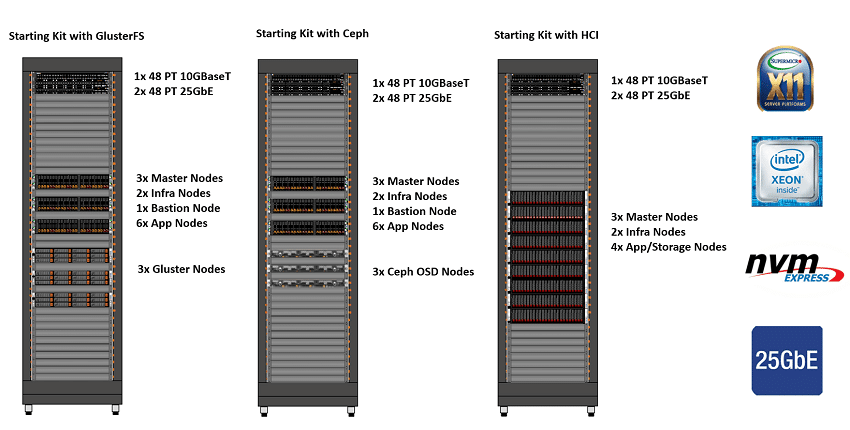Recently, Supermicro introduced open private cloud solutions running Red Hat Enterprise Linux 8 on Supermicro server and storage systems. Red Hat is one of the most successful open source software companies and the world's leading enterprise Linux platform provider. Supermicro (Super Micro Computer Incorporated, SMCI) was founded in 1993 and is one of the fastest growing IT companies in the world. Supermicro provides a wide range of products and servers; most focused around cloud software and hardware.

Supermicro is selling their new private cloud solutions under the name Supermicro Solution for Red Hat OpenShift Container Platform. Their new products include integrated hardware, software and support packages built with Kubernetes to provide on-premises, private, and hybrid cloud environments. The starting kits for the servers come in three varieties all in a 42U form factor. Currently, their website lists only one option for the Master, Infra, and App nodes of which each kit has at least nine nodes. The key features of these 2U BigTwin nodes are four dual-processor server nodes and Simply Double SuperStorage systems supporting 24 hot-swap 3.5-inch hard drives in 2U. The processors are 2nd Gen Intel Xeon Scalable processors, and the server includes high-performance NVMe and 25G Ethernet. These optimized solutions are designed for modern datacenters with easier deployment to improve OPEX. For demanding and complex applications such as AI (artificial intelligence) and Big Data, performance accelerated options are available to include Intel Optane DC persistent memory, GPU accelerators, and 100GbE networking.




 Amazon
Amazon